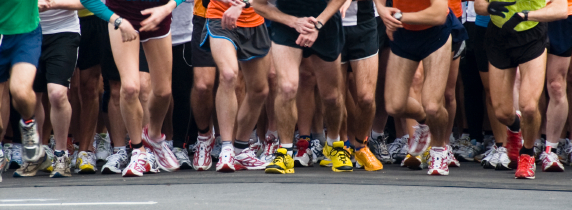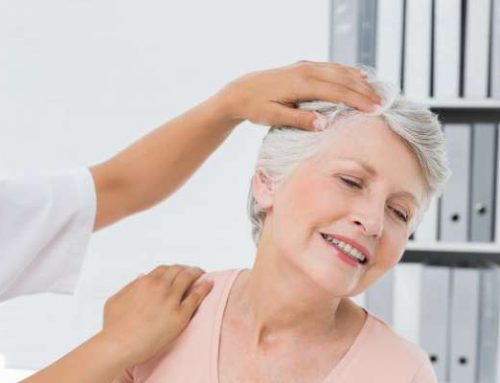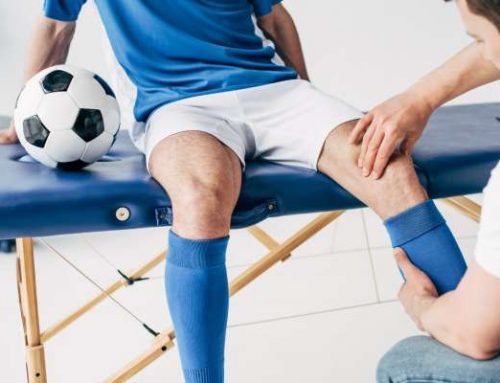People punish their feet daily by wearing ill fitting shoes or by walking around on feet that do not function properly. Educate yourself and start improving the health of your feet.
- 25 % of the Bones in the Body are in your Feet. Your feet are a complex system of 52 bones, 66 joints, 214 ligaments, 38 muscles and tendons. It is no wonder that 75% of North Americans will experience foot health problems of varying degrees, at some point in their lives.
- The average person takes 8,000 to 10,000 steps per day. Your feet have an important job; they carry you throughout the day, with every step making an impact on your body. If your foot functions improperly it will have an effect on joints higher up the kinetic chain (your ankle, knee, hip and spine). This may result in pain or discomfort. Most individuals will seek out medical attention for the symptoms they are experiencing in their joints, but do not realize the source of their pain is their feet.
- The Right Running Shoe for You… If you are active, it is important that you select the right athletic shoe for your sport and for your foot type. With so many choices on the market, you should consult an expert for the best brand and model for your particular foot each time you buy.
- 60-70% of People with Diabetes have Mild to Severe Forms of Nerve Damage, Often Impairing the Sensation of the Feet. Foot disease is one of the complications of diabetes. Severe nerve damage in the feet can lead to ulceration and often lower extremity amputations. Early prevention and treatment of foot disease can be managed by effective foot care practices. These practices include: diagnosis of high pressure areas on the diabetic foot and treatment with properly fitted orthotics or footwear.
- Many Foot Conditions (Bunions, Calluses, Corns, etc.) Are Caused by Ill Fitting Shoes Most individuals buy shoes that do not properly fit their feet and that tend to aggravate foot ailments. When shopping for shoes make sure you go in the afternoon – your feet swell during the day. Also bring the proper socks for the style of shoe you will be buying, and if applicable, bring your custom orthotics. Shoe sizes vary based on the shoe make and style – do not always assume you will be the same size every time. Achieving the Proper Fit:
-
-
- The toe box should have a ton of room; make sure you can wiggle your toes
- Ensure the width fits properly (your forefoot should never be wider than the shoe)
- Your heel should be stable within the heel counter
- The shoes should feel comfortable the moment you try them on
-
Common Ailments Related To Poor Foot Biomechanics
Plantar Fasciitis
What is it?
Plantar fasciitis is an inflammatory condition that occurs where the plantar fascia attaches to the medial tuberosity of the calcaneus.
What causes it?
Over-pronation results in a constant tugging of the aforementioned attachment site. Inflammation then results from this constant insult to the local tissues. When the patient is off-weight bearing, scar tissue begins to repair the site of injury. When the patient resumes weight-bearing, the scar tissue is torn resulting in acute pain. This explains why patients with this disorder typically experience the most pain when they get out of bed, or stand after a period of sitting.
What is the treatment?
Firstly, one must control the acute phase with ice or modalities that aid in the reduction of inflammation. Next, the biomechanical fault (over-pronation) needs to be corrected to take the chronic strain of the fascia. This may be accomplished with a properly designed custom orthotic.
Morton’s Neuroma
What is it? Morton’s Neuroma is a thickening of the tissue that surrounds the inter-metatarsal nerve leading to the toes. When the nerve becomes squeezed and irritated, it causes painful symptoms. Neuroma patients occasionally complain of a “pins and needles” sensation that spreads through their fourth and fifth toes, or of a feeling akin to hitting their “funny bone.” What Causes It? A Neuroma can occur in response to the irritation of a nerve by one or more factors: • Abnormal foot function or foot mechanics: primarily excessive pronation that causes strain on the nerve. • Improper footwear: constricting, narrow, poor-fitting shoes with a tight or pointed toe box tend to compress the end of the foot, leading to excessive pressure in the area of the nerve. High-heeled shoes are a particular culprit here. • Previous trauma to the foot: Those who engage in high-impact activities that bring repetitive trauma to the foot (running, aerobics, etc.) have a greater chance of developing a Neuroma. What is the treatment?
Once a diagnosis is obtained, it is essential to begin treatment immediately. If caught early enough, shoes that fit properly, and orthoses with metatarsal support may eliminate the need for any further intervention. There are orthoses and corrective shoes that can effectively alleviate the disturbances to the foot mechanics that are causing nerve inflammation.
Metatarsalgia
What is it?
Metatarsalgia is not an injury; it’s actually a symptom or a group of symptoms. These may include pain in the ball of the foot, with or without bruising, and inflammation. It is often localized in the metatarsal heads or it may be more isolated, in the area near the big toe. One of the hallmarks of this disorder is pain in the ball of the foot during weight-bearing activities. Sharp or shooting pains in the toes also may be present, and pain in the toes and/or ball of the foot may increase when the toes are flexed. Accompanying symptoms may include tingling or numbness in the toes. It is common to experience acute, recurrent or chronic pain as a result of this problem.
What causes it?
Metatarsalgia develops when something changes or threatens the normal mechanics of the foot. Ultimately, this creates excessive pressure in the ball of the foot, and that leads to metatarsalgia. Some of the causes of metatarsalgia include:
- Being overweight: the more weight is brought to bear on the foot, the greater the pressure is on the forefoot when taking a step. As men and women age, the fat pad in the foot tends to thin out, creating less cushioning and making them more susceptible to pain in the ball of the foot.
- Wearing shoes that do not fit properly: Shoes with a narrow, tight toe box, or shoes that cause a great deal of pressure to be put on the ball of the foot (high heels, for example) are often the cause of metatarsalgia. Because such footwear inhibits the walking process and forces the wearer to alter his or her step to adjust to the shoe, the mechanics of the foot are compromised.
- Certain foot shapes contribute to metatarsalgia. A high-arched foot, or a foot with an extra-long metatarsal bone can cause pressure on the forefoot region and contribute to pain and inflammation there.
- Claw toes or hammertoes can press the metatarsals toward the ground and cause stress on the ball of the foot.
- Arthritis, gout or other inflammatory joint disorders can produce pain in the ball of the foot.
What is the treatment?
Some of the best treatments come from being proactive. Having the patient keep their body weight at a healthy level and wear shoes that fit properly, particularly in the toe area. Patients should avoid high heels whenever possible.
For patients with metatarsalgia one or more of the following measures should be taken:
- Orthotics help feet function more normally inside the shoe. Metatarsal support should be considered in the design of the orthotics.
- Wearing appropriate footwear: clinicians should take a look at the footwear of their patients.
- Advise the patient to keep the body weight in a healthy range.
- Rest and ice.
Achilles Tendonitis
What is it?
Achilles Tendonitis is an inflammation of the common tendon of the gastrocnemius and soleus muscles of the posterior compartment of the leg.
What causes it?
Patients that have equinis deformity and/or run up-hill are candidates for this disorder. As the tibia moves over the foot, the ankle joint needs to be able to dorsiflex at least 10 degrees. If this is not possible, due to tightness of the aforementioned musculature, the tissues of the tendon can be damaged. In addition it is thought that over-pronation may reduce the blood supply to the area by “wringing out” the arterial blood supply to the tendon. This is due to the twisting movement of the tendon associated with over-pronation of the foot.
What is the treatment?
Firstly measures to reduce the inflammation such as ice and various electrical modalities should be employed. In addition all shoes should have a heel lift in them to reduce the strain on the tendon. In fact the patient should not even stand barefoot during this phase. After the acute phase, the patient may undergo a stretching program and foot orthotics should be prescribed to reduce the over-pronation. It is also advisable to have heel lifts added to the orthotics and to avoid up-hill running in the future.
Shin Splints
What is it?
The condition known as Shin Splints involves a muscular over-use scenario. There are Anterior Shin Splints and Posterior Shin Splints. Anterior Shin Splints involve the Tibialis anterior muscle of the anterior compartment of the leg, and Posterior Shin Splints involve the Tibialis posterior muscle of the posterior compartment of the leg.
What causes it?
Both of these muscles are involved in slowing down pronation during the stance phase of gait. Tibialis anterior functions early in the stance phase while Tibialis posterior functions a little later. If the patient over-pronates or pronates too rapidly, either or both of these muscles may be called upon to work harder than normal. As a result, fatigue sets in, leading to inefficient force production which leads to micro-tearing of the soft tissue and therefore an inflammatory reaction. Since the muscle is wrapped in a fascial covering, the swelling that occurs from the aforementioned problem is restricted by this covering. Beyond the fact that much pain results from the entire process, the pressure within the fascial covering can be sufficient to “choke-off” the blood supply to the involved musculature, further added to the insult on the tissue. In severe circumstances the swelling can be severe enough to damage the deep peroneal nerve resulting in a permanent “foot drop”, as this nerve supplies the dorsiflexors of the foot.
The scenario that typically brings on “shin splints” is a sedentary individual that suddenly starts running or walking long distances. When that individual is also an over-pronator, the combination of having weak muscles from lack of activity and having this biomechanical fault increases the likelihood of injury. Even changing the type of shoe worn during walking or running can be sufficient to increase the pronation of the subtalar and transverse tarsal joints and lead to tissue injury.
What is the treatment?
The first step in the recovery process is to stop the activity that initiated the tissue damage. At this point measures to control inflammation such as ice, anti-inflammatory medication and electrical modalities such as ultrasound and interferential therapy may be indicated. The patient is then started on a stretching program followed by a program aimed at strengthening the involved musculature. The next step is to begin walking distances that do not aggravate the condition. The mileage is gradually increased until the patient can complete the activity without pain. This is probably a good point in the recovery protocol to introduce foot orthotics to reduce the over-pronation. Without the orthotics, it is quite possible that the conditions will re-occur even with the proper conditioning. The orthotics will help take the load of the muscles that will be over-worked if the pronation is not controlled. Once the patient has adapted to the biomechanical devices, the patient may start running short distances. The mileage is gradually increased until the desired level is reached.
Iliotibial Band Syndrome
What is it?
The iliotibial band which is a thick extension of the tensor fascia latae muscle slides over the lateral epicondyle. Iliotibial Band Syndrome is an inflammatory reaction at the side where this sliding occurs. What causes it?
If the foot over-pronates, this is accompanied by internal rotation of the entire lower limb, producing a constant friction between the band and the bony prominence of the femur. It is therefore very common among runners especially if they run on a banked track or downhill. What is the treatment?
First the patient must rest from the causative activity. During this time anti-inflammatory measures should be employed (ice, various modalities). Finally the biomechanical fault (over-pronation) should be corrected reduce the tendency for the lower limb to rotate excessively. An orthotic designed to reduce pronation should accomplish this task.
Runners Knee
What is it?
Runner’s Knee is a general term referring to pain around the front of a runner’s knee.
What causes it?
If the pain is anteromedial in location, the source of the problem may be over-pronation. The internal rotation of the tibia associated with over-pronation, may cause the knee to fall into a functional valgus orientation during the stance phase of gait. This in turn will compromise the ligaments on the medial aspect of the knee. Furthermore the abnormal motion will result in abnormal pressures behind the patella, leading to a more specific knee malady referred to as chondromalacia patella. What is the treatment?
If over-pronation is the biomechanical fault in question, then orthotics designed to normalize the movements of the subtalar and transverse tarsal joints will solve the problem rather quickly.
Sacroiliac Syndrome
What is it?
Sacroiliac syndrome is a painful inflammatory condition of the sacroiliac joints. The patient generally experiences pain in the buttock and thigh regions. It is typically aggravated by sitting for long periods.
What causes it?
Quite frequently is caused by an injury such as would be sustained by a fall on the buttocks or during a lifting activity. However there is some evidence to suggest that a chronic irritation from abnormal foot mechanics is also a possible cause. When a foot over-pronates, it creates a tendency towards internal rotation of the lower limb. Due to the anatomy of the hip joint, this internal rotation translates into an extension of the pelvis (PSIS’s rotate upward while ASIS’s rotate downward). If the mechanics of the feet are not symmetrical, then conflicting rotations may occur at the two sacroiliac joints. This appears to set up a chronic irritation of these joints leading to the inflammation.
What is the treatment?
Spinal manipulation will be effective if the cause was traumatic in nature. However if the cause is poor foot mechanics, manipulation will only resolve the symptoms temporarily. To address the issue at hand, correction of the abnormal foot mechanics may be accomplished with orthotic prescription. Once the offending pathomechanics are dealt with, spinal manipulation should show long lasting effects.





